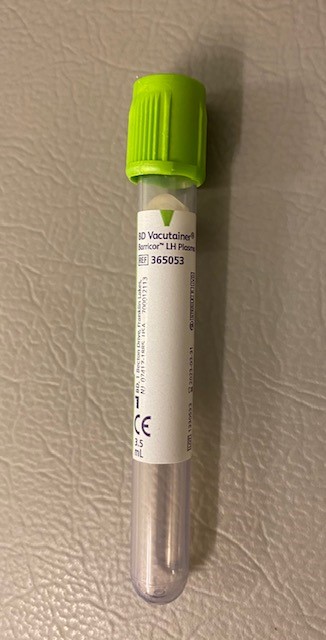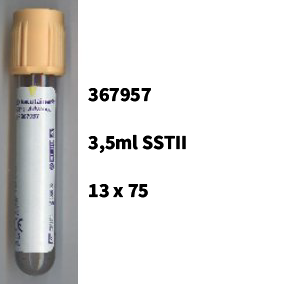| Referentiewaarden: | 8 uur: 0,15 - 0,50 µmol/l
16 uur: 0,10 - 0,30 µmol/l
23 uur: < 0,20 µmol/l
1 - 7 dagen: 0,20 - 0,95 µmol/l
7 dagen - 1 jaar: 0,15 - 0,60 µmol/l
1 jaar - 10 jaar: 0,10 - 0,60 µmol/l
> 10 jaar: 0,15 - 0,50 µmol/l |
| Interpretatie: | Cortisol in plasma altijd 's ochtend tussen 8 en 9 u bepalen voorafgaand aan toediending van steroiden.
Plasma cortisol kan om diverse redenen verhoogd zijn:
Fysiologisch: zwangerschap, duursport, ondervoeding, stress
Pseudo-Cushing: depressie, psychose, paniekstoornis, chronisch alcoholisme, anorexia nervosa, adipositas, diabetes mellitus, glucocorticoid resistentie.
Syndroom van Cushing: endogeen: ACTH afhankelijk (85 %) of ACTH onafhankelijk (15 %) of exogeen: chronisch gebruik van glucocorticosteroiden.
Een verhoogde ohtend cortisol in plasma en een afwijkende dexamethason (1 mg) o.n. suppressietest kan 24 uurs urine cortisol soms nog nodig zijn om Cushing uit te sluiten. Bij afwijkend cortisol en verlaagd ACTH is sprake van ACTH onafhankelijk Cushing (CT bijnieren) en normaal of verhoogd ACTH van ACTH onafhankelijke Cushing (ziekte van Cushing of ectopische ACTH productie).
Ochtend cortisol < 0,08 en verhoogd ACTH is bewijzend voor primaire bijnierschorsinsufficientie (ziekte van Addison). Bij verdenking op bijnierschorsinsufficientie en normale cortisol spiegels een SYNacthen test laten uitvoeren.
Secundair hypocotrisolisme (exogeen glucocorticoïd gebruik, na behandeling van Cushing, hypofysaire of hypothalame aandoening, chronische stress, post-traumatisch stress syndroom, langdurig ernstige ziekte) komt zeer frequent voor. |
| Bronvermelding: | MW Elminger, W Kuhnel and WB Ranke. Reference ranges for serum conecntration of LH, FSH, E2, Prolactin, Progesteron, SHBG, DHEAS, Cortisol and Ferritin in neonates, children and young adults. CCLM 2002; 40:1151-1160. |

